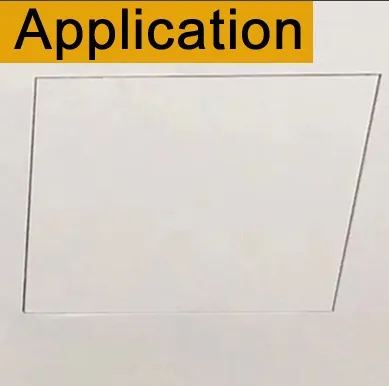- Afrikaans
- Albanian
- Amharic
- Arabic
- Armenian
- Azerbaijani
- Basque
- Belarusian
- Bengali
- Bosnian
- Bulgarian
- Catalan
- Cebuano
- Corsican
- Croatian
- Czech
- Danish
- Dutch
- English
- Esperanto
- Estonian
- French
- German
- Greek
- Hindi
- Indonesian
- irish
- Italian
- Japanese
- Korean
- Lao
- Malay
- Myanmar
- Norwegian
- Norwegian
- Polish
- Portuguese
- Romanian
- Russian
- Serbian
- Spanish
- Swedish
- Thai
- Turkish
- Ukrainian
- Uzbek
- Vietnamese
Dez . 15, 2024 13:19 Back to list
what is ceiling grid made of
What is Ceiling Grid Made Of?
A ceiling grid is an essential component of modern interior design, playing a critical role in the construction of suspended or drop ceilings. It serves as the framework that supports ceiling tiles or panels and is integral for aesthetic and functional purposes in both residential and commercial buildings. Understanding what a ceiling grid is made of can help homeowners and builders make informed choices when selecting materials for their ceiling projects.
Composition of Ceiling Grids
The materials used in ceiling grid systems can vary, but they are generally categorized into two primary types metal and vinyl.
1. Metal Grids Typically, ceiling grids are made from metal, most commonly galvanized steel or aluminum. These metals are prized for their strength, durability, and resistance to corrosion.
- Galvanized Steel This is the most widely used material for ceiling grids due to its robust nature and long-term reliability. The galvanization process involves coating the steel with a layer of zinc, which enhances its resistance to rust and oxidation, making it suitable for various environments, including areas with high humidity.
- Aluminum Light yet strong, aluminum grids are another excellent option. They are naturally resistant to corrosion, making them ideal for applications where moisture may be a concern. Aluminum grids are also easier to handle and install due to their lightweight nature.
2. Vinyl Grids For specific applications, especially in areas prone to dampness, vinyl ceiling grids may be used. These grids are made from high-quality PVC (polyvinyl chloride), offering a non-reactive, moisture-resistant option that is particularly suited for bathrooms and kitchens.
- Advantages of Vinyl Vinyl grids are lightweight, easy to install, and resistant to chemicals and stains, making them an excellent choice for environments where cleanliness is paramount.
what is ceiling grid made of

Design and Aesthetics
Ceiling grids come in various designs, allowing for a range of aesthetic applications. The grids are typically available in different styles, including exposed and concealed systems. Exposed grids are visible and contribute to the industrial look of a space, while concealed grids provide a clean and smooth appearance, hiding the grid system behind the ceiling tiles.
The grid patterns themselves can vary, with standard 2x2-foot or 2x4-foot tiles being the most common sizes. Customization options are also available, allowing for innovative designs that enhance the overall look of a room.
Installation and Maintenance
Installing a ceiling grid involves precise measurements and a careful understanding of the space's design requirements. The grid is suspended from the main ceiling structure using wires or hangers to create the desired height for the drop ceiling.
Maintenance is minimal, as metal grids can simply be wiped clean, while vinyl grids can be cleaned with mild detergents. It’s essential to replace any damaged tiles promptly to maintain both the functionality and aesthetics of the ceiling.
Conclusion
In summary, ceiling grids are made from durable materials, primarily metal or vinyl, each offering unique advantages for different environments. Understanding these materials can guide homeowners and builders to make the best choices for their ceiling designs. Whether for a residential home or a commercial space, ceiling grids ensure a visually appealing and functional ceiling that enhances the overall interior design.
-
Transform Interiors with PVC Gypsum Ceiling: A Stylish, Durable, and Moisture-Resistant SolutionNewsMay.19,2025
-
The Smart Interior Upgrade: Discover the Durability and Versatility of Gypsum Ceiling Access Panel SolutionsNewsMay.19,2025
-
The Smart Choice for Interior Design: Discover the Value of PVC Gypsum Ceiling SolutionsNewsMay.19,2025
-
Mineral Fiber Ceiling Tiles: The Smart Blend of Performance and AestheticsNewsMay.19,2025
-
Mineral Fiber Ceiling Tiles: The Superior Choice Over Gypsum for Sound and Fire SafetyNewsMay.19,2025
-
Mineral Fiber Ceiling Tiles: Eco-Friendly Strength and Style for Every CeilingNewsMay.19,2025







